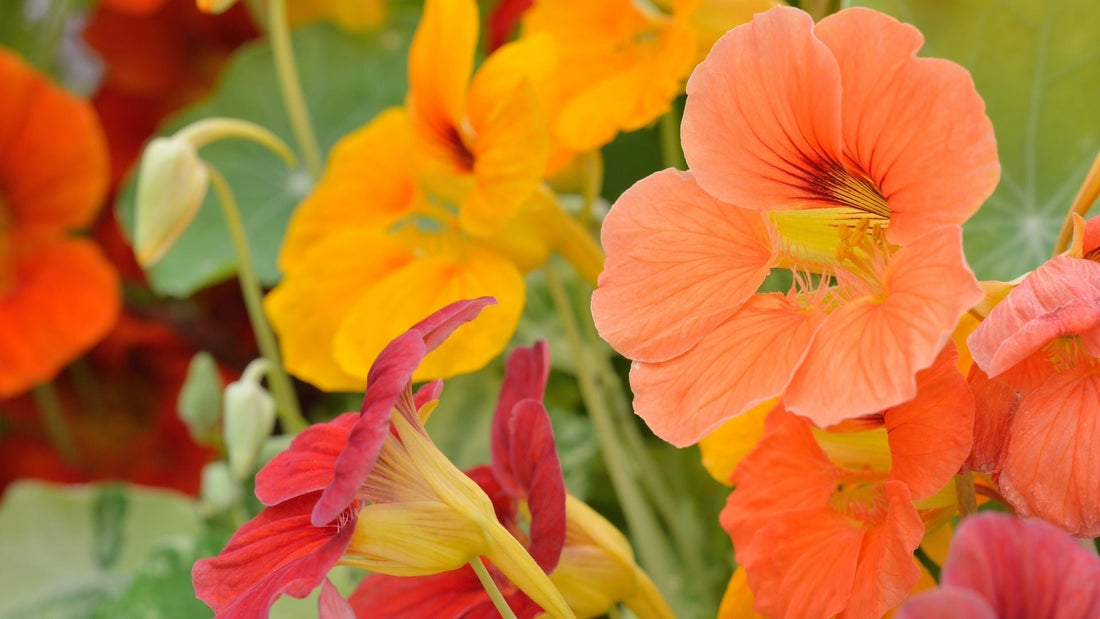
Grow Guide: Nasturtium
Share
More than just a bright edible flower, nasturtiums offer delicate shades for natural dyeing and are incredibly easy to grow.
With their round leaves, trailing or mounding growth, and fiery flowers, nasturtiums add beauty, function, and color to the garden. While best known as a culinary flower, they also provide soft yellows, greens, and peach tones to natural fiber when used in bundle dyeing or solar dye baths.
Basic Info:
- Common Names: Nasturtium, Indian Cress
- Color (for dyeing): Pale yellow, green, and peach (subtle tones)
- Flower Type: Funnel-shaped, often red, orange, yellow
- Scientific Name: Tropaeolum majus
Cultivation Info:
- Days to Maturity: 55–65 days
- USDA Hardiness Zone: Annual in Zones 2–11
- Planting Depth: 1/2 inch deep
- Plant Spacing: 10–12 inches apart
- Growth Habit: Trailing, mounding, or climbing; 1–3 feet
- Soil Preference: Well-drained, lean soil (too much fertility = more leaves, fewer flowers)
- Light Preference: Full sun to partial shade
Additional Information:
- Taxonomy: Family Tropaeolaceae
- Seed Type: Heirloom and open-pollinated varieties available
- Sow Instructions: Direct sow after last frost; or start indoors 2–4 weeks before last frost date. Germinates in 7–10 days at 65–70°F.
- Diseases: Generally disease-resistant
- Pests: Aphids, cabbage loopers, whiteflies (can also act as a trap crop for pest management)
Natural Dyeing Use:
Nasturtiums yield subtle yellow-green to peach hues on natural fabrics. Best used in bundle dyeing or as part of solar dye jars where the petals and leaves can interact with fabric directly. These colors work best on protein fibers like silk and wool but can tint cotton when pretreated. They pair beautifully with other botanicals to create layered and watercolor-like effects.
Troubleshooting Tips:
- No flowers? Avoid rich soil and heavy fertilization. Lean soil promotes blooming.
- Wilting or pest damage? Nasturtiums are aphid magnets—check regularly and hose off pests or use natural sprays.
- Slow germination? Soak seeds overnight before planting to speed sprouting.
